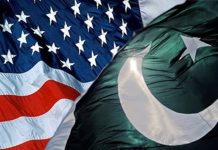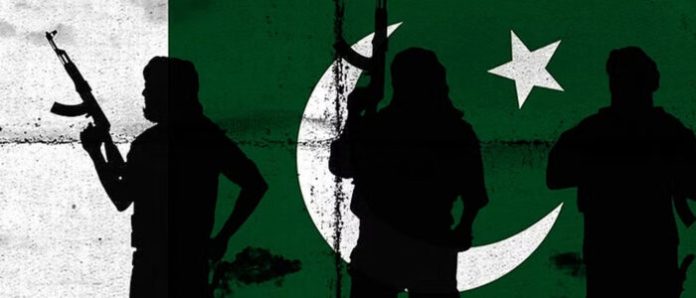Pakistan remains in the news for all the wrong reasons. The fifth Baloch insurgency that has continued with varying intensity since 2005 has taken an ominous turn with attacks of ever-growing ferocity and sophistication by pro-independence Baloch militias. A train carrying around 400 passengers, including several army personnel, was hijacked recently by the Balochistan Liberation Army (BLA), resulting in a two-day battle with the security forces and multiple killings.
The stranglehold of the Punjabi-dominated Pakistani establishment has alienated smaller ethnicities, including the Baloch, over the years. The province has seen little growth and gross exploitation of its resources. Repeated attempts by the Baloch to claim their political and economic rights have been crushed with brutal force. Their pent-up anger is now on full display. Besides underground militias, there is a mass movement led by human rights activist Mahrang Baloch. The resulting volatility has been accentuated by a fierce geopolitical contestation in this resource-rich territory abutting the Arabian Sea, close to the oil transit choke point of the Strait of Hormuz, Iran and Afghanistan.
China has strengthened its foothold in Balochistan through the China-Pakistan Economic Corridor (CPEC), its exit to the sea bypassing the maritime choke points in the east and a potential staging point for its navy. The Baloch see China as complicit in their exploitation and the Chinese designs alarm some other countries.
Pakistan’s security challenge has multiplied owing to its fraught relationship with its erstwhile protégé — the Afghan Taliban. The Taliban flatly deny the Pakistani charge that Tehreek-e-Taliban Pakistan (TTP) and Baloch insurgents operate from the Afghan soil. This has seriously impacted Pakistan’s Pakhtun belt, a vulnerable area due to the Pakhtun pull from the other side of the Durand Line, which no Afghan government has accepted to date.
Pakistan has no easy answers. The number of terror attacks in the country (mainly in Balochistan and Khyber Pakhtunkhwa) doubled last year and the death toll surged by around 50 per cent.
The sharp political polarisation since Imran Khan’s ouster from power in 2022 remains unresolved. It impairs the ability of the state to respond to its other challenges. The rancour between army chief Asim Munir and Imran Khan all but rules out a rapprochement. The economy has stabilised somewhat with inflation down and the threat of a sovereign default warded off, but it is far from out of the woods. While the government has carried out some economic reforms under IMF pressure, its ability to sustain the process remains suspect.
The establishment has shown little inclination to course-correct, either by changing its self-defeating posture towards India or addressing politically the grievances of the smaller ethnicities. Asim Munir has called for Pakistan turning from a soft to a hard state, as if it has not already inflicted enough violence on its people.
The reaction in India to Pakistan’s complex challenges, particularly the terror wave, has ranged from schadenfreude to predictions of its disintegration. This is not unexpected due to the history of the relationship and its current impasse.
The ruling narrative in Pakistan is that India is not interested in improving the relationship, foments terror and should reverse its Article 370 move for bilateral engagement. The predominant feeling in India is that the no-dialogue, punitive approach of the last few years has succeeded in reducing Pak-sponsored violence in J&K appreciably; though it is due, inter alia, to Pakistan’s self-absorption and changed geopolitical circumstances.
Consequently, we are now completely dependent on a security-centric approach. Though indispensable in our relationship with Pakistan, deterrence and coercion cannot build peace, let alone manage the relationship at an acceptable level of volatility indefinitely; and it must, therefore, be complemented by diplomacy in order not to become instruments of perennial conflict.
Further, though catastrophic, Pakistan’s recent terror wave needs to be put in perspective. Pakistan faced far more serious terror across its territory, including the Punjabi heartland, in the first decade of this century. The targets included the GHQ in Rawalpindi, the Mehran naval airbase in Karachi, the Kamra aeronautical complex and several ISI offices. Widely believed to be facing an existential threat, Pakistan survived. It cannot tempt fate indefinitely, but hasty conclusions regarding its future are avoidable.
Pakistan’s crises should also alert us to a bigger threat. Our strategic discourse concerning South Asia has remained fixated on terrorism and meddling by China. However, a much bigger danger is the widespread instability in our immediate periphery due, inter alia, to authoritarian rule, myopic policies, mismanaged economies, poverty, heavy debt burden, religious extremism and a pronounced youth bulge with inadequate economic opportunities.
This mix threatens to blow apart governance structures as seen in Sri Lanka in 2022 and Bangladesh last year. Meltdowns in our neighbourhood will not leave us untouched. For example, a collapsed Pakistan will not fold back neatly into India, but will likely present us with an unbridled sea of extremism and violence next door. The prospect of large numbers fleeing turmoil and deprivation towards us through porous land borders and a flat terrain should be a matter of concern.
After initially seeing a pan-South Asia agenda as an attempt by our smaller neighbours to gang up against us, as we gained strength and confidence, we came to present a vision in SAARC of India leveraging its economic success and stability to promote stability and prosperity in South Asia. Pakistan repeatedly spiked it. Instead of continuing to isolate Pakistan, we have all but abandoned SAARC and stopped voicing the above vision.









































